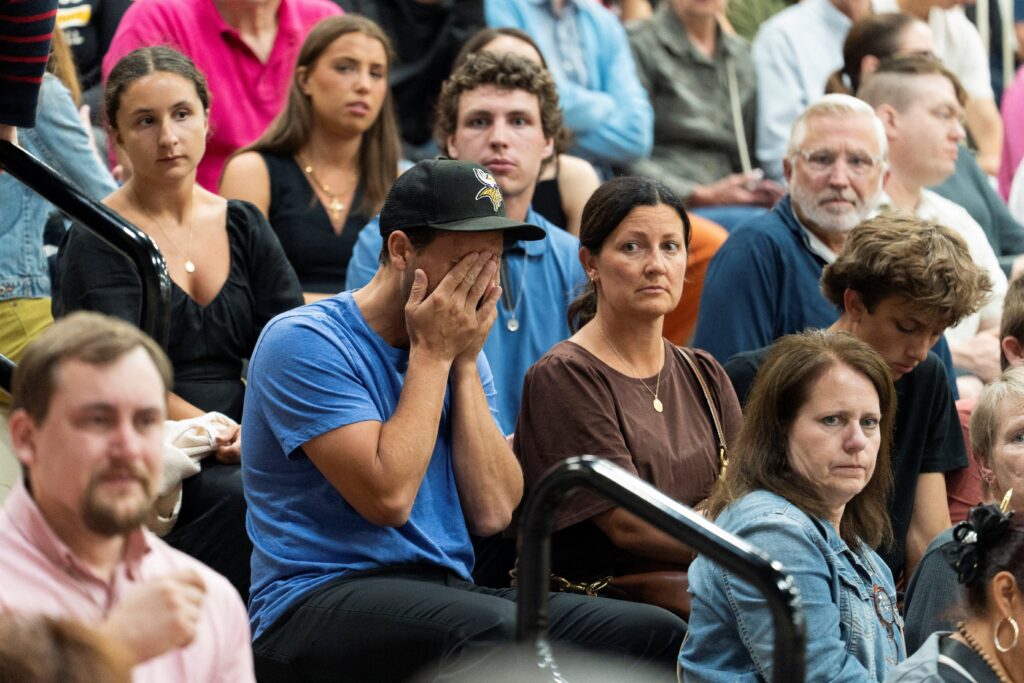
In the aftermath of Wednesday’s shooting at a Minneapolis Catholic church that killed two students and injured 17 others, schools nationwide are reminded of the importance of crisis response planning. For Catholic schools in the Archdiocese of New York, that support comes from mental health professionals who have been responding to school crises for nearly four decades.
Two students were killed and 17 others, including 14 children, were injured when a shooter opened fire at Annunciation Catholic Church in Minneapolis during a back-to-school Mass being celebrated for neighboring Annunciation Catholic School.
Founded in 1972, the Archdiocese of New York Drug Abuse Prevention Program (ADAPP) is funded by the New York State Office of Addiction Services and Supports to provide substance use and violence prevention, education, and early intervention in Catholic Schools of the Archdiocese of New York. ADAPP currently has a permanent presence in 37 elementary schools and 12 high schools, ADAPP Executive Director Christine Cavallucci told The Good Newsroom in a telephone interview.
ADAPP’s mission covers more than its name may imply, Cavallucci said. “By looking at substance use prevention, we’re really talking about mental health promotion, social and emotional wellness, and all of those things because substance use is a symptom of all of those things. So we try to address all of those issues.” The organization currently has a staff of 27 licensed social workers and mental health counselors, she said.
Consistent approach guides intervention efforts
Crisis response and intervention has become a key role for ADAPP as it has evolved. “Since the late 1980s, we’ve had the function of responding, and those crises can range from the death of a student, the death of a teacher, to a large-scale crisis, which could be anything from a natural disaster. Certainly we were available to the schools in lower Manhattan after September 11,” Cavallucci said. Fires at schools and bus accidents have also led to ADAPP involvement, she said. Several years ago, Cardinal Timothy Dolan initiated active shooter response drills at schools in the archdiocese as part of the schools’ overall crisis response plan.
Although different types of events may lead to ADAPP response, it uses a consistent approach to each case. “Anytime we enter a situation, we want to limit the impact, we want to provide support, and we want to return the school to normal safely because that’s one of the most important things,” she said. Working with school administration and faculty is central to ADAPP’s work, although that can be complicated in a situation like Minneapolis, where school staff are also affected. “We would offer either individual meetings in each classroom or small group meetings, and depending on the nature of the incident, that would determine how many days we are available after for a school,” Cavallucci said.
Focus on prevention and building connections
In addition to its crisis response capacity, ADAPP provides training for teachers and school staff on identification and reaction to students in crisis, along with resources on its website for parents and guardians. Adult role modeling has an important role to play, not just at home but at school, Cavallucci said. “The most important thing a young person can have is that connection to a significant adult. So being that person, being that teacher, the principal, the role of the school is really important in recognizing that as a prevention effort.”
Prevention and early involvement with a student in crisis is key. “I think we as a society often respond to something without taking a step back and looking at what can we embed in our families, in our schools, that will prevent a situation. How are we helping young people manage the world around them?” Cavallucci said.
Learn more about ADAPP and its work at adapp.org.


